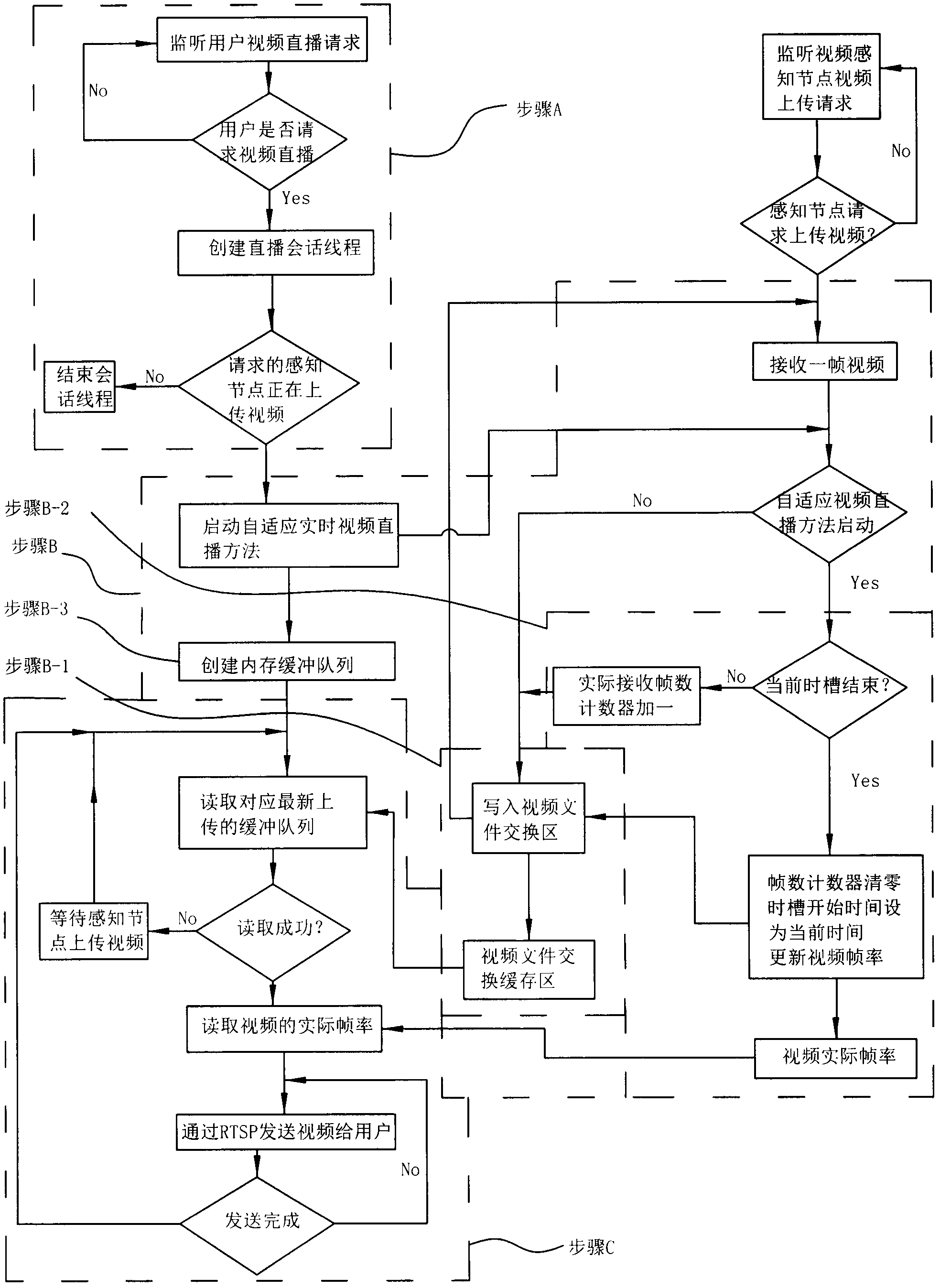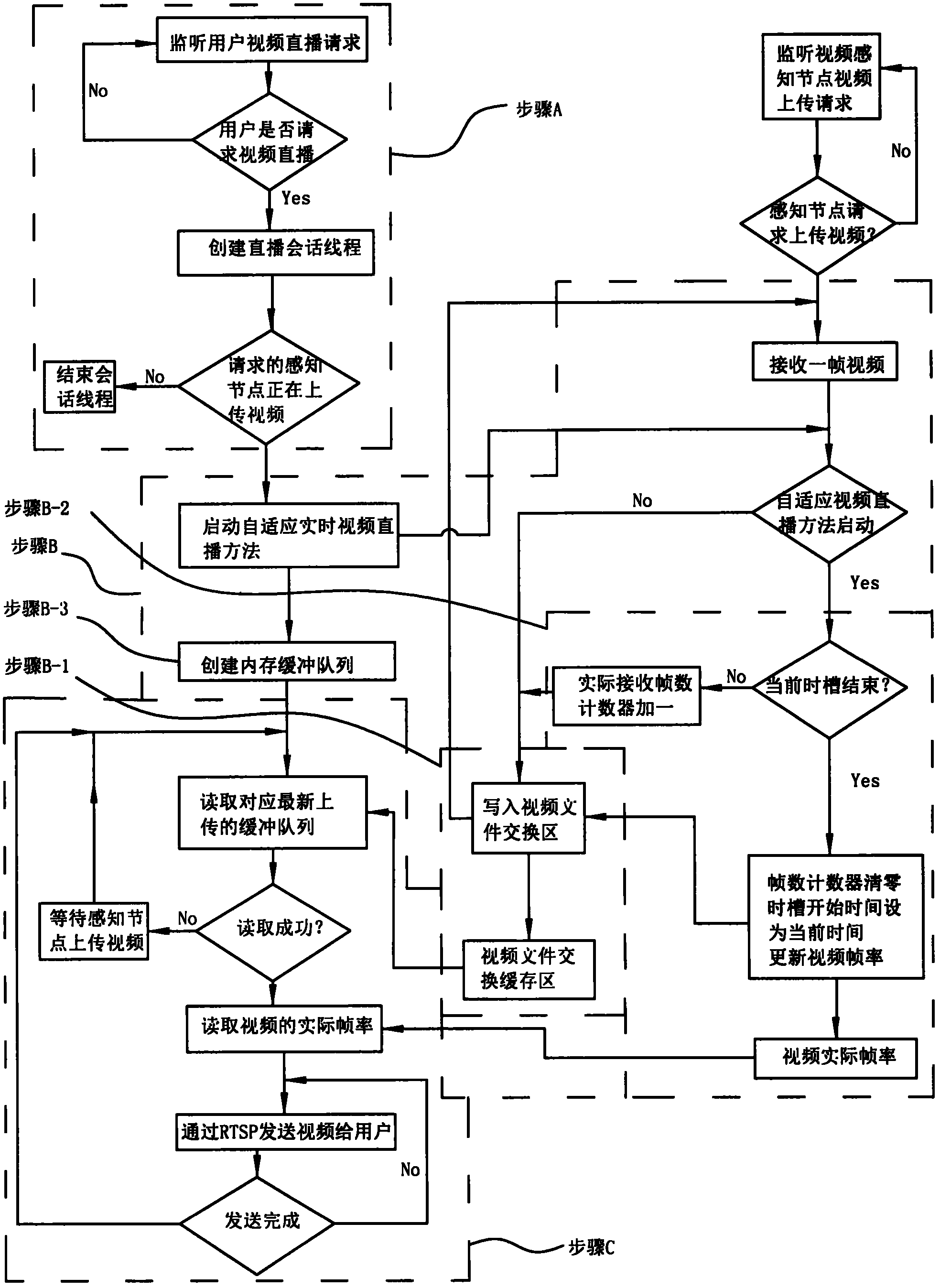Method for video playing and based on stream media system
A video playback and streaming media technology, applied in image communication, selective content distribution, electrical components, etc., can solve the problems of poor versatility, method dependence, estimation and prediction methods that cannot accurately reflect network changes, etc., to achieve good practicability, Enhance fluency and facilitate the effect of network scale
- Summary
- Abstract
- Description
- Claims
- Application Information
AI Technical Summary
Problems solved by technology
Method used
Image
Examples
Embodiment 1
[0025] Such as figure 1 Shown:
[0026] A kind of video playback method based on streaming media system in the present embodiment, comprises the following steps:
[0027] A. The user sends a video playback message;
[0028] B. The streaming media system receives video playback information, and at the same time receives real-time video uploaded by video perception nodes, performs multi-level caching of real-time video data, and counts and sums up the number of video frames received in the cached video for a certain period of time. Record;
[0029] C. The streaming media system reads the real-time video in the time slot interval, and transmits the video to the user according to the number of real-time video frames obtained by statistics.
[0030] The multi-level cache in step B is a serial multi-level cache.
[0031] Step B includes the following steps:
[0032] B-1. The streaming media system receives the real-time video uploaded by the sensing node and stores it in the fi...
PUM
 Login to View More
Login to View More Abstract
Description
Claims
Application Information
 Login to View More
Login to View More - R&D
- Intellectual Property
- Life Sciences
- Materials
- Tech Scout
- Unparalleled Data Quality
- Higher Quality Content
- 60% Fewer Hallucinations
Browse by: Latest US Patents, China's latest patents, Technical Efficacy Thesaurus, Application Domain, Technology Topic, Popular Technical Reports.
© 2025 PatSnap. All rights reserved.Legal|Privacy policy|Modern Slavery Act Transparency Statement|Sitemap|About US| Contact US: help@patsnap.com


